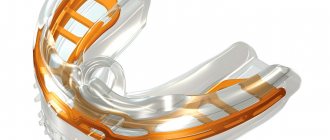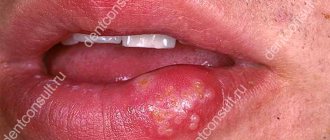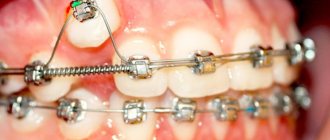Many mothers begin to worry when they see that their child is sucking his tongue. Parents do not know what to do in this situation and whether it is necessary to distract the child from this activity. In fact, such child behavior is not dangerous if it occurs infrequently. If the baby constantly sucks his tongue, then ultimately these actions will lead to unpleasant consequences in the future. In the case of such ambiguous behavior, you should immediately try to figure out what the reason is in order to get rid of this bad habit.
Correct effective breastfeeding
A good attachment to the breast and effective sucking by the baby is observed with the following signs:
- Most of the areola, including the nipple, is in the baby's mouth.
- The breast is pulled into the mouth, forming a long "nipple", but the nipple itself takes up about a third of the space in the mouth. The areola is almost invisible.
- The baby sucks on the breast, not the nipple. His mouth is wide open, his chin is pressed to his mother's chest, his lips are turned outward, his head is slightly thrown back.
- The baby's tongue is directed forward towards the lower gum, folded at the edges to form a bed for the nipple. When a baby suckles, a wave travels along the tongue from front to back, pressing the nipple and part of the breast against the hard palate to squeeze milk from the breast into the mouth for swallowing.
- The baby actually uses suction mainly to draw breast tissue into the mouth and hold it there.
- When the baby is well attached and properly attached to the breast, his mouth and tongue do not rub or injure the skin of the nipple and areola.
- The baby is comfortable, and the feeding process is pleasant for the mother. She doesn't feel pain.
If the baby is well attached to the breast, then he will be able to suck milk effectively. The following signs will indicate this: the baby makes slow, visible sucking movements. Swallowing sounds are heard approximately once per second. Sometimes the baby pauses for a few seconds, allowing the milk to fill his mouth. When the baby starts sucking again, he can do it a little faster at first, stimulating the supply of milk, and then switching to slow, deep sucking movements. The baby's cheeks remain rounded during feeding. Toward the end of feeding, sucking usually slows down, movements become less frequent and are accompanied by longer pauses. It is important that the baby continues to suckle, since at this time the “hind” milk, rich in fats, arrives. When the baby is full, he spontaneously releases the breast. The nipple may look stretched at this time, but it returns to its original shape in a few seconds.
How to stop a baby from sucking his tongue
You can give the baby a pacifier, so his need will be satisfied. When teething, you need to offer your baby a special toy called a teether. It can be in the form of a transparent ring filled with gel. You can pre-chill it in the refrigerator - this will help soothe any discomfort during teething. Don’t forget to give your baby more free time, communicate with him, go for walks, show love and affection.
Incorrect and ineffective breastfeeding by the baby
Signs that your baby is not properly attached to the breast and is not sucking correctly:
- The baby's mouth only contains the nipple, not the breast tissue. In this case, the areola is clearly visible, and the child’s mouth is not open wide. The lips are rolled inward or extended into a tube.
- The baby's tongue is not extended and cannot reach the breast to squeeze milk out of it.
- The feeding process is uncomfortable or painful for the mother, causing pain in the nipples and their damage (cracks).
A baby who is poorly attached to the breast will most likely not suckle effectively. He may suck quickly, but will swallow very rarely and his cheeks will retract inwards. When the baby stops sucking and releases the breast, the nipple may remain flattened for a long time or have signs of compression.
When a baby sucks ineffectively, the milk does not flow well into the nipple. As a result, due to impaired milk flow, blockages of the milk ducts and mastitis can occur. If a baby doesn't consume enough milk, it will lead to poor weight gain. Also in such cases, the baby may be weaned. Or, on the contrary, the baby will suck for too long and want to eat too often, which will lead to reflex stimulation of the production of excess milk.
The reasons for ineffective attachment and breastfeeding may include:
- The use of a feeding bottle and pacifiers, which change the child’s motor sucking patterns to incorrect ones: the child begins to suck not the breast, but the nipple - as well as the pacifier.
- Functional difficulties such as flat and inverted nipples, or a very small or weak infant.
However, the most important reasons are the inexperience of the mother and the lack of qualified assistance from the medical workers who visit her. Many mothers need qualified help from a lactation consultant in the first days of feeding to ensure that the baby attaches well and suckles at the breast.
What is the reason for the weakness of the sucking-swallowing reflex?
A decrease in the reflex in infants is due to the following reasons:
- birth injuries, fetal hypoxia (during childbirth or intrauterine), which led to damage to the nervous system;
- paralysis or paresis of the cranial nerves (vagus, trigeminal, facial, hypoglossal and glossopharyngeal);
- severe diseases of internal organs, accompanied by severe weakness, lethargy, and malaise;
- flat shape of the mother’s nipples;
- mental retardation;
- damage to the oral mucosa (stomatitis);
- diseases in which breathing through the nose is impaired (ARVI, acute or chronic rhinitis of any origin).
Babies with a weakened reflex sluggishly suck on the breast or bottle nipple or even refuse to eat and quickly fall asleep while feeding. Such babies are discharged home only when they have already learned to suck well. In the future, they should be observed by a neurologist so as not to miss neurological pathology.
Call a breastfeeding specialist to your home
At the group's children's medical centers, we know that the most convenient place for breastfeeding consultations is your own cozy home:
- A specialist will come to you at a convenient time. You don't have to go to the clinic and wait in line. Consultations can also be held directly in the maternity hospital (if visits are permissible) or in a medical center.
- A familiar home environment makes consultation easier for both mother and child.
- At home, the consultant will be able to devote more time to both the child and the parents.
- The consultant is always a phone call away: day and night (at night you can call the contact center or write to the consultant, the consultant will answer as soon as possible), on weekdays and on weekends.
- Support from a specialist is not one-time consultations, but accompaniment: the consultant will visit the mother and baby again, if necessary, after 2-4 weeks to check how feeding is going and the baby’s weight gain.
In addition to calling a breastfeeding specialist to your home, you can call doctors of the main specialties: pediatrician, surgeon, allergist, urologist, pulmonologist, hematologist, dermatologist, ophthalmologist, ENT doctor, orthopedist, gastroenterologist and osteopath. You can also take tests, perform physiotherapy and massage at home. Infant swimming consultants can advise you at home and conduct a master class.
Find out about the special offer “Comprehensive examination at home”: the convenience of this program is that you can choose from a list of pediatric doctors exactly those specialists that your child needs and an individual set of medical services with a 20% discount!
As a conclusion
You need to unlearn this bad habit, but if nothing works, then you should stop and take a breath. Thumb sucking is, of course, a worrying sign that requires an adult response. However, it cannot be considered a disaster.
Experts recommend acting consistently and with maximum caution. You cannot force a child; punishment will also not help in the fight against a bad habit.
The choice of the preferred method will depend on several factors, including the age of the child and the cause of the negative addiction. It is better to abandon harsh methods such as smearing mustard on your fingers or tying your hands.
Thus, the process of weaning off the habit of thumb sucking can take a long time. And yet there is no need to despair. The mother needs to gain strength and patience, and the baby will definitely very soon give up the idea of putting his fist in his mouth.
Advantages of calling Virilis Group specialists to your home
- Travel to any area of the city and region without restrictions.
- No insurance, registration or citizenship is required to receive medical care.
- Providing assistance to children of any age.
- Experience in responsible treatment of children in St. Petersburg since 1991.
- 6 own children's medical centers with 650 specialists in 49 specialties.
- Possibility of diagnostics and continuation of treatment in our clinics.
- Coordination with other doctors of the VIRILIS Group of Companies clinics: we are a single team, and not individual doctors from a “mobile” clinic.
- 24/7 contact center.
- Issuance of official medical certificates and documents.
- Possibility of purchasing a package of a comprehensive medical program for a child, including the “Emergency Care” and “Comprehensive Examination at Home” packages.
- Special medical programs for newborns and infants.
What is dangerous about the absence of a sucking-swallowing reflex?
It takes a lot of time to restore the sucking reflex, but with competent coordinated actions by doctors and the child’s parents, a favorable prognosis is possible. Children catch up with their peers in development by the end of the first year of life (less often the third).
If the unconditioned reflex cannot be restored, two scenarios are possible:
- The child dies of exhaustion.
- Further tube feeding. Most of these children do not live up to one year, some of them can last up to 2-3 years. Death is associated primarily with disruption of the digestive tract.
What does tongue position affect?
Language takes part in many important processes:
- determines the taste and temperature of food;
- helps in mixing food and saliva, starting the digestion process;
- facilitates swallowing;
- participates in the formation of speech.
And also, making several thousand movements per day (swallowing movements alone are about 2000), the tongue participates in the formation of the arch of the palate and bite.
The relationship of the jaws in the bite has a close relationship with the position of the head relative to the body and posture in general.
Bite is the relationship between the dentition of the upper and lower jaws during their tight closure. Depending on age, the bite can be milky, replaceable or permanent. Classification of occlusion is not the topic of this article, so I will focus only on the description of physiological occlusion, which is characterized by the following features:
- does not interfere with the process of eating;
- does not distort speech;
- does not spoil the external characteristics of the face.
When the teeth are completely closed, the physiological occlusion meets the following indicators:
- the upper dentition covers a third of the lower dentition;
- all opposing chewing teeth of the upper and lower jaws fit well together;
- a conventional central line drawn vertically along the face divides the jaws into equal halves.
I apologize in advance to orthodontists for such a simplified description of the physiological bite and there may be some other inaccuracies. I hope the meaning of the article did not suffer from this.
For proper growth of teeth, the so-called myodynamic balance must be formed in the oral cavity, that is, the pressure of the tongue from the inside on the dentition of the upper jaw must correspond to the pressure of the muscles of the lips and cheeks from the outside.
Normally, the tip of the tongue is in a neutral position, located behind the upper incisors, without touching them. Where the tongue is when we pronounce the sound “H” is the so-called “resting point”. During each swallowing movement, the back of the tongue is pressed against the palate, stimulating the growth of the upper jaw in width, improving blood supply to the nasal and oropharynx and thus increasing local immunity. The correct position of the tongue at rest and when swallowing is only possible with nasal breathing, while the mouth must be closed. When breathing through the nose, all the air inhaled has time to be purified and warmed up. The air flow passing through the nasal turbinates also stimulates the growth of the upper jaw in width and the harmonious growth of the entire middle third of the face.
Now I will dwell a little on the changeable bite and the problems of the formation of a physiological bite, which become obvious precisely during the change of teeth. Usually this age ranges from 4-5 years to 12-14 years. During the mixed bite, the most intensive growth of the jaw bones occurs, so bite correction is also most effective at this time.
In children who breathe through their mouth, the so-called “adenoid” type of face is formed, the face becomes narrow and long - elongated. Narrow jaws cause a lack of space for permanent teeth, that is, they are crowded. The Gothic palate and lack of space for the back of the tongue creates problems with sound pronunciation.
Children with malocclusion often breathe through their mouths, even if the nasal passages are clear. They develop habitual mouth breathing and begin to get colds more often. It has been proven that mouth breathing reduces blood oxygenation, as well as the transfer of oxygen to tissues. The brain suffers more than other organs from hypoxia. Children become irritable, not assiduous, and not attentive.
The tongue in such children is in the middle (interdental) or low position - between the palate and the lower jaw. When swallowing, it does not rest against the roof of the mouth, but against the teeth. The tongue is a powerful muscular organ and when it is pressed, the teeth deviate from their normal position.
Very often this is combined with weakness of the orbicularis oris muscle, which normally should balance the pressure on the teeth from the outside.
Normally, swallowing should be visible only by the movement of the thyroid cartilage, the face should not tense. If the position of the tongue is incorrect and the orbicularis oris muscle is weak, the child has to use additional muscles to keep the mouth closed when swallowing. He begins to help himself when swallowing with the corners of his lips, facial muscles, neck movements, shoulders, and sometimes even his stomach.
The tongue, in the middle or lower position, blocks the airways and, in order to somehow open them, the child is forced to move his head forward and raise his chin. This unnatural position of the head and neck also changes the upper chest. Orthopedists, seeing such a picture, talk about poor posture.
So, a change in the position of the tongue leads to a change in the position of the head, a distortion of the anatomically correct location relative to each other of the cervical vertebrae, hyoid bone, cartilage of the larynx and soft tissues of the neck, trachea and esophagus, vessels supplying the brain, and nerve trunks that ensure the functioning of all internal organs.
Thus, during a mixed dentition, it becomes extremely important to form nasal breathing and create conditions for the anatomically correct position and functioning of the tongue, because this will contribute to both the normal development of the dentofacial system and the child’s entire body.
- normal chewing, facilitates the functioning of the entire gastrointestinal tract;
- normal swallowing forms a correct bite and harmonious facial features;
- nasal breathing reduces the risk of colds (the air is purified, warmed, lymphoid tissue is not subject to additional stress and does not hypertrophy);
- improves central nervous system function due to sufficient oxygen supply;
- communication function improves due to clear and understandable speech;
- Due to correct posture, a sense of balance, dexterity, and coordination develops.
Correct bite and anatomical position of the tongue are the key to the health and well-being of your child.
I would like to briefly list the factors that can lead to incorrect position and functioning of the tongue:
- Intrauterine factors (multiple pregnancy, abnormalities in the structure of the uterus, increased tone of the uterus during pregnancy, genetic conditions, etc.);
- Traumatic childbirth;
- Prematurity;
- Artificial ventilation in the first year of life;
- Artificial feeding;
- Untimely introduction of complementary foods;
- Lack of solid food in the child’s diet;
- Bad habits: thumb, tongue, cheek, and various objects sucking, prolonged pacifier sucking (more than 1.5 years);
- Premature loss of baby teeth;
- Frequent diseases of the ENT organs, enlarged adenoids.











